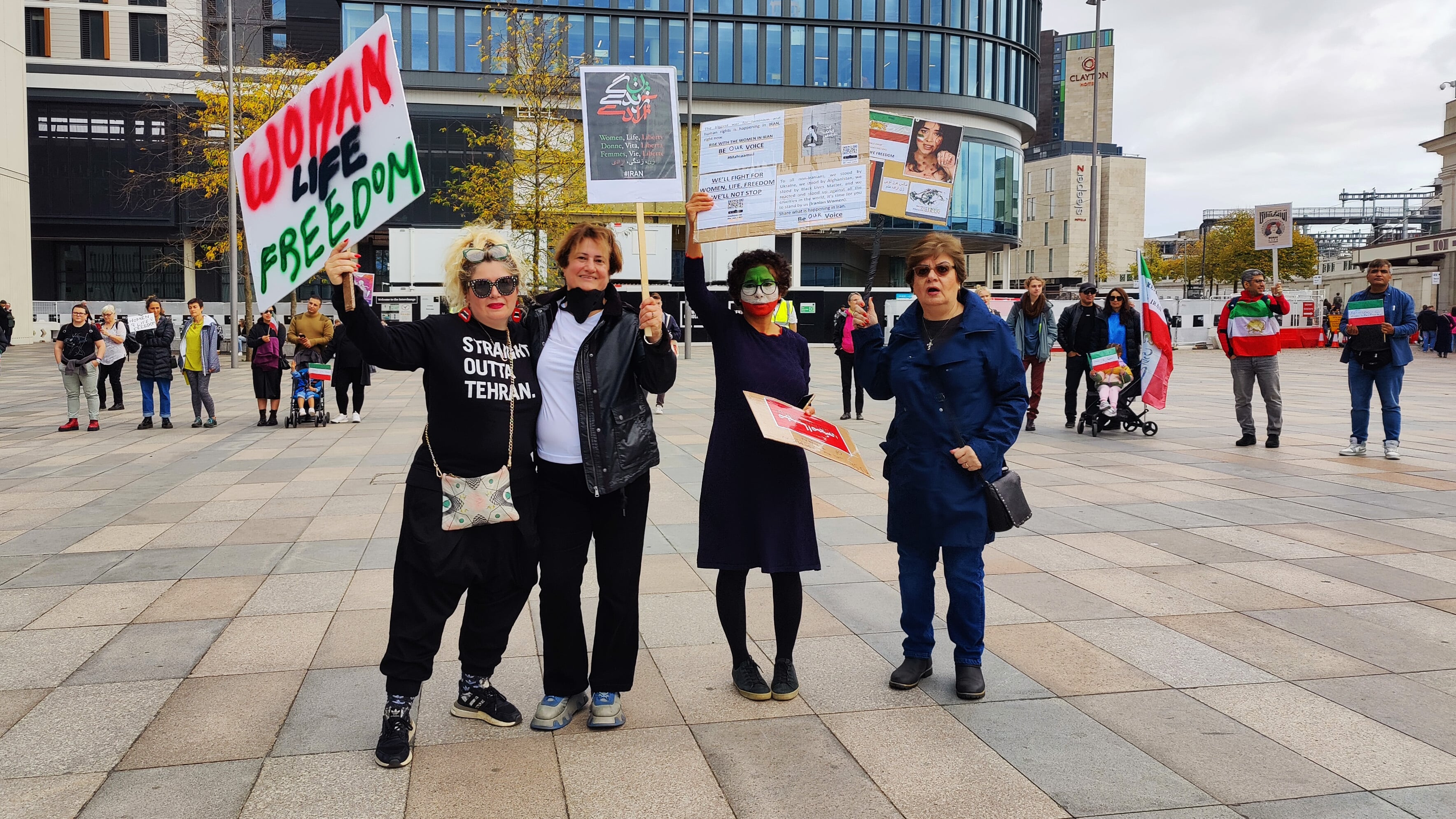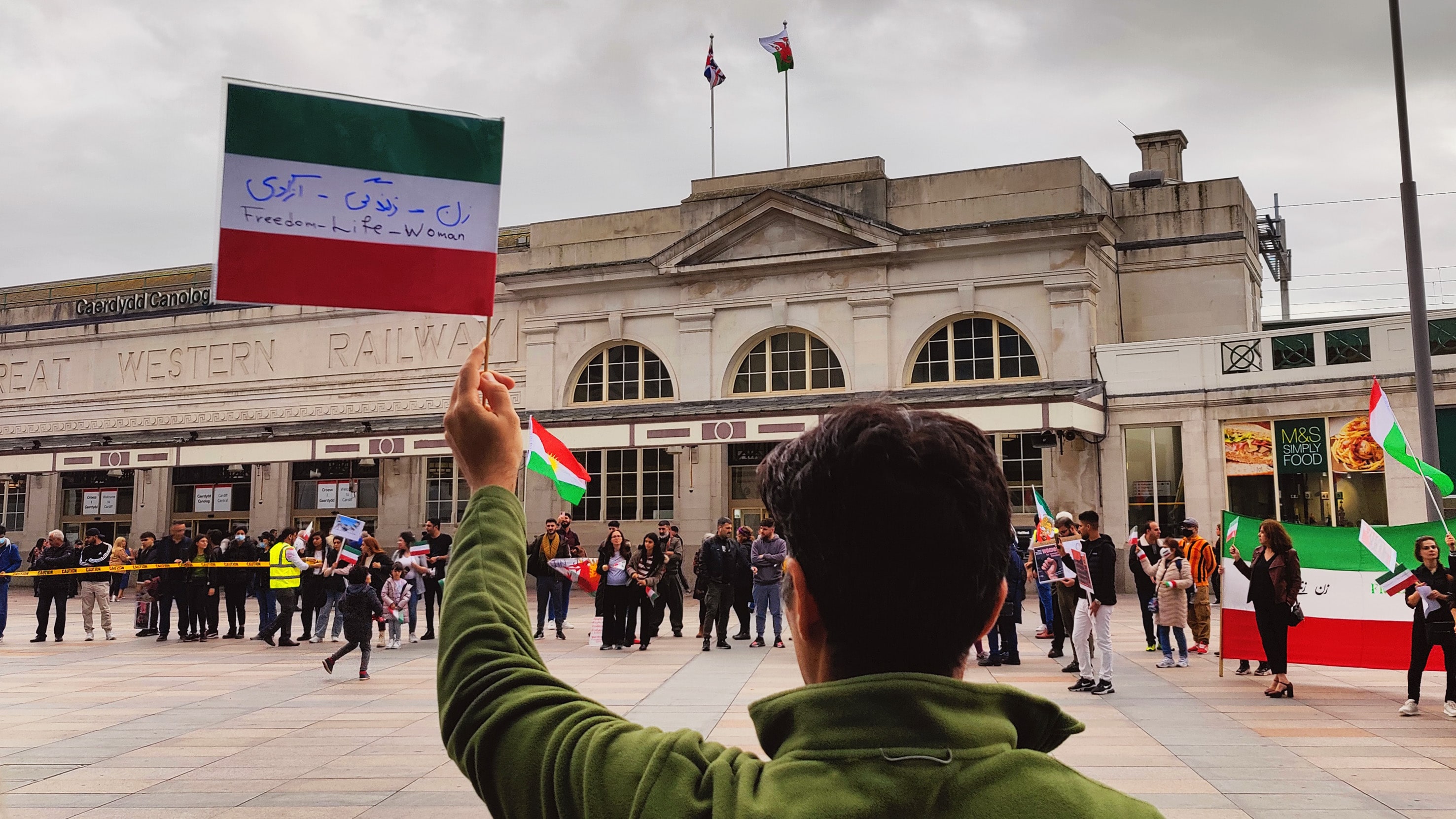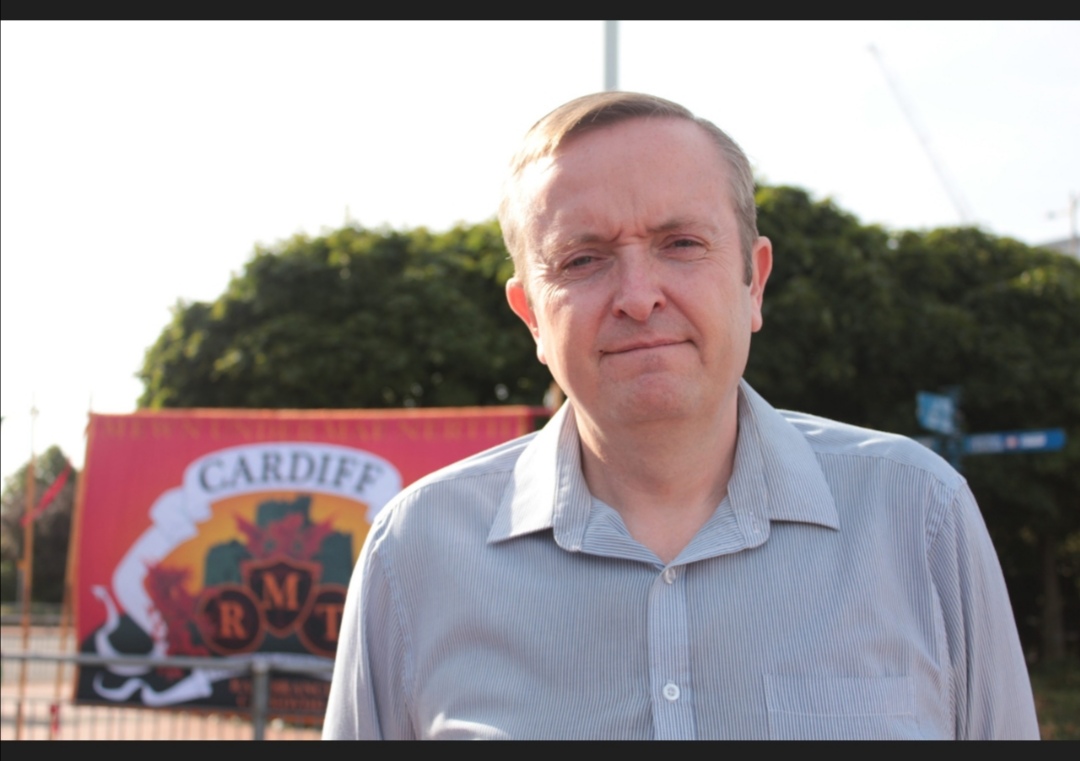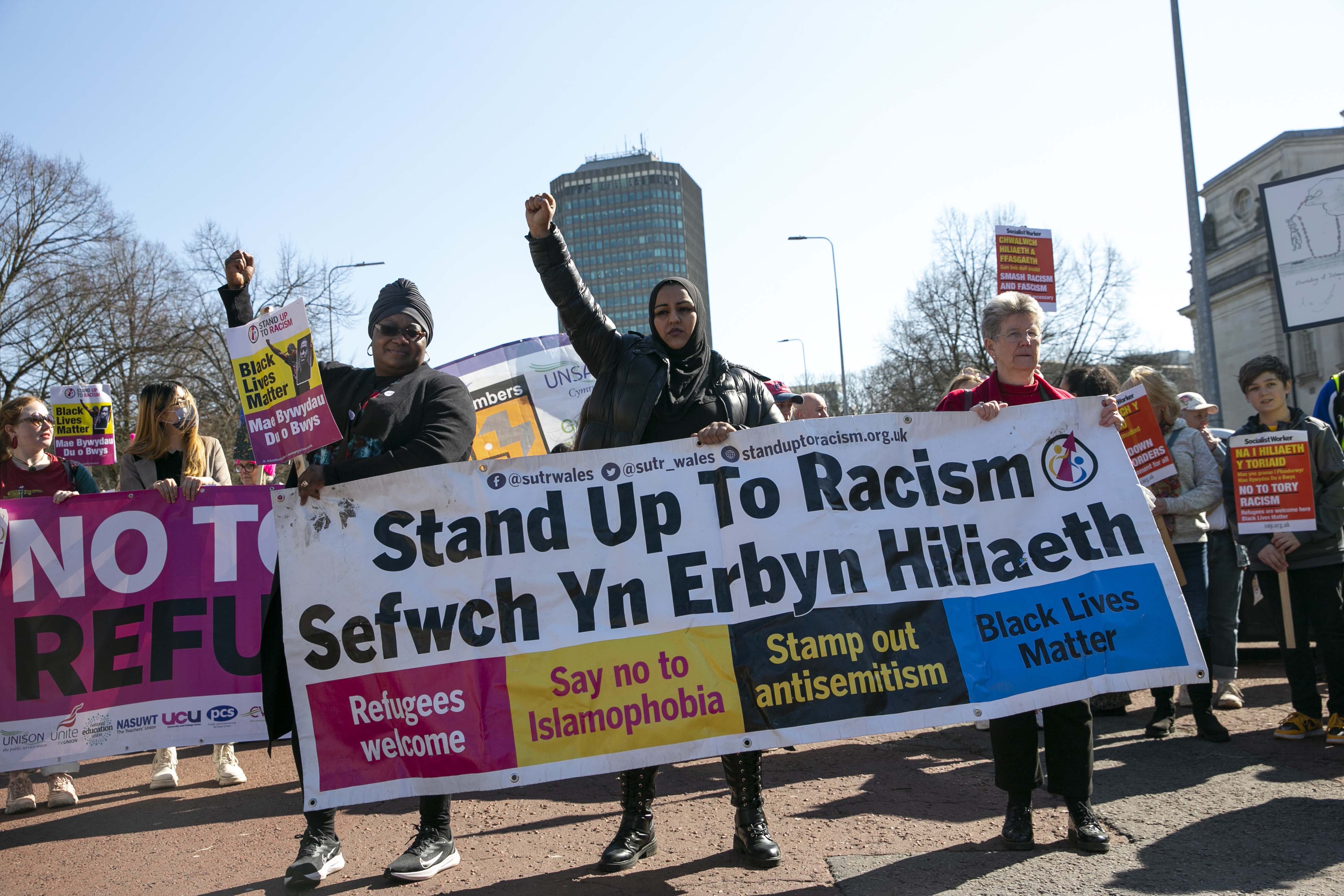
“One Solution – Revolution”: Cardiff Shows Solidarity With Uprising for Women’s Freedom in Iran”
Hundreds gathered to mourn the imprisonment and martyrdom of protesters in Iran, and to celebrate the start of a new struggle against the Khamenei regime and women’s oppression. This article contains mention of physical violence, misogyny, rape and other forms of sexual violence.
By Tirth Trivedi. Images by Tirth Trivedi
On Saturday, Cardiff’s Central Square witnessed a defiant cry for action against repression and tyranny – for women, lives, and freedom in the state of Iran.
It has been a month since the alleged torture and murder of Mahsa Amini, a 22-year-old Kurdish-Iranian woman, by the Iranian morality police for not wearing the law-mandated hijab in accordance with the government’s strict standards.
Since then, the movement for change and liberalisation in Iran has spread from Tehran to all corners of the country, with footage of protests ranging from a few hundred to a several thousand protesters being reported across the nation.
“These are kids born in the 90s and the 2000s… they are out there empty handed, facing bullets and dying for what they believe in,” says Elham Borzouei, 31, one of the organisers of the protest.
“Let’s be clear – this is not only about the hijab, but the freedom of choice,” says Borzouei. “My mother wears a scarf, my sister and I don’t. We are saying that we want the freedom to decide.”

Borzouei herself was arrested in Iran because of the Hijab laws. “I was arrested by this morality police. Imagine the fear of a 16-17-year-old girl – just because I wasn’t wearing what they wanted me to wear.” She left Iran at the age of 20 and has since worked as an accountant in the UK.
While the protests in Tehran started following the death of Mahsa Amini, and against the hijab laws, it has ballooned into an all-out revolt against Ayatollah Khamenei’s theocratic regime in Iran.
The state has retaliated violently, with Iranian NGOs reporting as many as 222 people dead, including 23 children and thousands more being imprisoned in jails such as Evin, and houses where women face abuse and torture on a daily basis by authorities.
Luna Amani, 47, a fashion designer, describes the horrific scenes of retribution taking place in Iran against the protests. “Because it is against the law to kill a virgin in Iran, they rape the girls and then they kill them… they believe that if you die a virgin then you go to heaven. They believe that these kids are sinful and should not go to heaven; it is just disgusting and twisted,” says Amani.
From September 30, reports of protests were reported in Iran’s Baluchistan region, where a 15-year old Sunni Baluch girl was raped by the police commander of Chabahar.
Women’s freedoms are also being suppressed in ways beyond hijab laws and sexual violence, says Borzouei: “If you want to leave the country, you need the husband to sign a permission for us to apply for a passport and leave. In the case of divorce, the father gets the custody of the children regardless of their age and gender. A woman needs her father’s permission to get married.”

Protesters of all ages, sexualities, genders and ethnicities shouted defiant slogans of “Jin, Jiyan, Azaadi” (Women, life, freedom) and ‘Freedom or death’ in the heart of the Welsh capital. Several Iranian and Kurdish men had also come out in solidarity with the movement.
The story of Kurdistan and its people have also received a new voice during this movement. Salah Baba Rasool says he lived in exile for years, having experienced three exoduses in his life. He arrived in the U.K. as a refugee twenty years ago. He is now the chairperson of the Kurdish All-Wales Association and had helped promote the demonstration on Saturday.
“Iran is a dictatorship, as a dictatorship you don’t care about minorities, about their languages, it is just natural,” says Rasool. More than 25% of all British asylum seekers in 2022 are Kurdish, and experience discrimination on a daily basis.

While the struggle of the Kurdish people has become part of the movement, it is not seen as separate to the struggle for women’s freedoms in Iran:
“Mahsa Amini was the daughter of everyone, of all nationalities in Iran, not just the Kurdish people. What is going on today is that everyone is fighting against the Iranian regime for their rights,” says Shoan Sofi, a Kurdish protester.
But the Kurdish people feel an additional pressure of ethnic discrimination from the Iranian government when participating in protests, says Sofi. “My brother-in-law has been arrested because he joined in the protest in the U.K. against the Iranian government. So, they keep pushing us (the Kurdistanis) to not involve ourselves in the protest.”
According to the protesters, there is no solution to these issues without the ousting of the theocratic government through a revolution.
“Reform is not an option,” says Amani. “It has to be a complete regime change.”

“We are treated like second-class citizens… the life of a woman is worth half of that of a man,” says Borzouei. “There is a presidential election every four years, and they change the president from one religious man to another. I am not saying they shouldn’t be Muslim but let’s at least have a free election.”
“The supreme leader (Ayatollah Khamenei) will not let people choose. He chooses who goes beneath him. That is where religion and politics mixes. If you open Evin prison, there are plenty of educated people there who can rule the country better than anyone can imagine,” says Borzouei. “I am hoping for a revolution.”
On the same day as the protest in Cardiff, protests ramped up throughout Iran and around
the globe. In Western Iran, hundreds of students were seen marching on Tabrez University in protest. Protests have also resulted in multiple industrial strikes, with male workers in Iran showing their support for the women-led rebellion. These have been especially pronounced in petroleum industries and refineries along the coast where at least 100 workers have been arrested.
Shopkeepers in Tehran also showed their support for the movement as shops remained shut and ‘death to dictators’ was shouted on the streets.
Protests in support of the uprising took place in some of the largest cities in the world, including London, Washington D.C., Toronto, Los Angeles and Brisbane. The largest action outside of Iran was seen in Berlin, where at least 80,000 protesters marched through the heart of the German capital demanding the ousting of the Ayatollah regime.
The demonstration in Cardiff also shouted slogans of ‘your silence is violence’ hinting at the silence in media coverage and by the government about the issues facing Iranian people.
“Raise awareness. I have talked to so many colleagues and friends and they don’t know what is happening. There is no clear information out there,” says Borzouei. “That’s painful.”



1 Comment
Comments are closed.